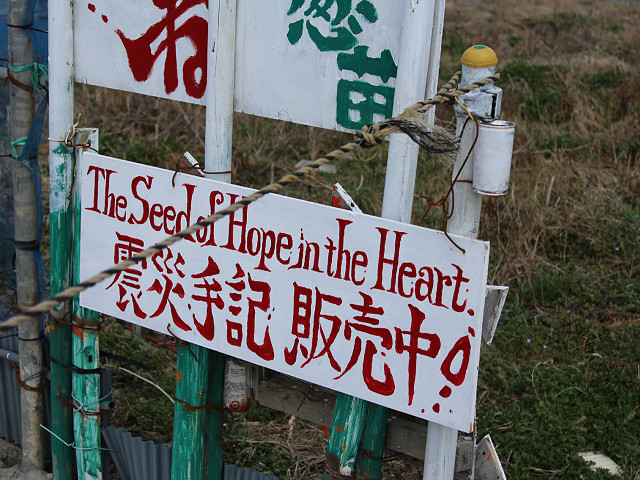Remembering Rikuzentakata

Back in 2013, I took a trip to Japan and made it a priority to visit the city of Rikuzentakata during my trip. With little info about how I would get there, I took a shinkansen to a nearby city called Ichinoseki. I arrived in Ichinoseki in the middle of the day, checked into my hotel, and went out to explore the town that evening. They had a shopping mall, restaurants, and all the types of stores you would need to live comfortably. The following morning, I took a long taxi ride to Rikuzentakata. I was not prepared for what I would see.
Seeing the area of Rikuzentakata that was closest to the shore was heartbreaking to say the least. The area’s buildings, fields, and roads had all been wiped out. I couldn’t fathom how the people directly affected had felt. The taxi was driving on reconstructed roads and only a few well constructed concrete buildings remained. When we arrived in the area, I realized that I had asked the taxi driver to take me to a place that was no longer there. It had been swept away by the tsunami in 2011. I traveled there to see the town and Ipponmatsu, the miracle pine, a lone pine tree that survived and was being reconstructed as a statue when I visited. I asked him to take me there instead of trying to find another location nearby. He dropped me off and I walked to a bridge in front of Ipponmatsu. They had a fence in place at the end of the bridge closest to Ipponmatsu.
People had placed flowers on the fence to honor those lost. While I was there I accidentally took one of the most impactful photos I remember. I meant to just take a photo of Ipponmatsu and a portion of the bridge, but at the moment I pressed the button an elderly man was bowing towards Ipponmatsu. Present-day me is a bit ashamed of myself for taking that photo when I should have waited for the people on that bridge to leave, that was disrespectful to them and to the memory of those lost. I was not trying to be rude or impose, but it doesn’t quite feel right now.
When I left Ipponmatsu and took a long walk toward the mountain, I walked by a seed shop. No one was there at the time, but something caught my eye. There was a sign in English that read “The Seed of Hope in the Heart.” I wasn’t sure if it was written by someone else who had visited the seed shop or someone from Rikuzentakata. It turns out it was written by the shop’s owner, Teiichi Sato. I found out after finding his book in a shop built inside a shipping container.
The shop sold various goods from people and businesses located in Rikuzentakata. Before I left, I bought a t-shirt, tote bag, his book, and I believe some snacks as well. It was nice to be able to take a bit of Rikuzentakata back home. I’m very happy I found a copy of Sato-san’s book. He went through a lot and he is an inspiring man. If you have the time, I recommend watching this short film about him, 113 Project Short Film Series: The Seed of Hope in the Heart and reading his book if you can find a copy.
I will always remember my trip to Rikuzentakata and I often get teary eyed thinking about it. When I was trying to find a way back to Ichinoseki from Rikuzentakata I missed the last bus. A man at the bus stop took the time to call me a taxi so I could make it back in time to catch a shinkansen ride that I had already scheduled and paid for. It was incredibly thoughtful of him and the taxi driver was very kind. My Japanese was not very good back then (it’s not a lot better nowadays), but he tried his best to have a conversation with me during the trip and shared his onigiri with me. Every time I eat konbu onigiri I am reminded of him and my trip to Rikuzentakata. I hope one day to go back to the area I visited. I want to see how much life and hope has returned.